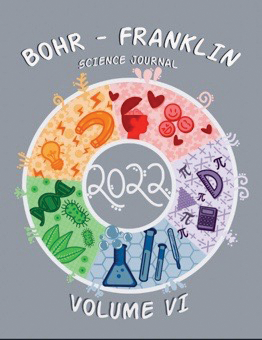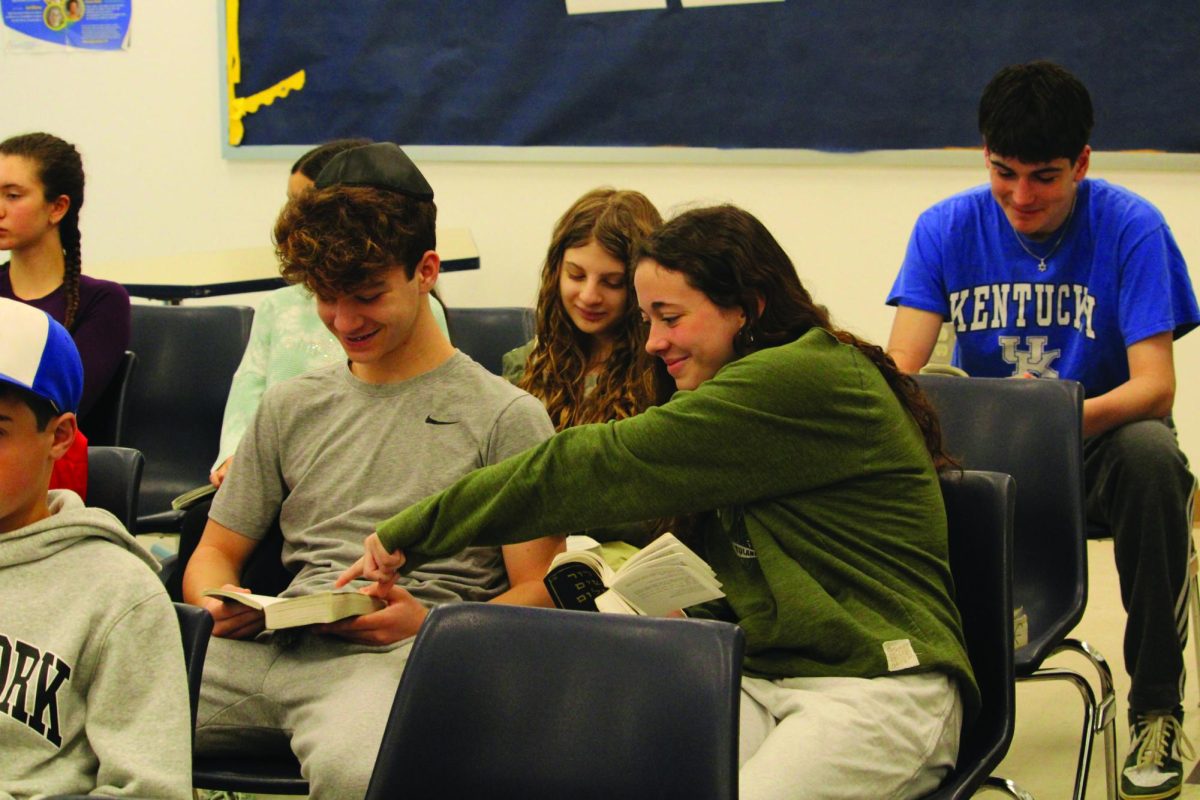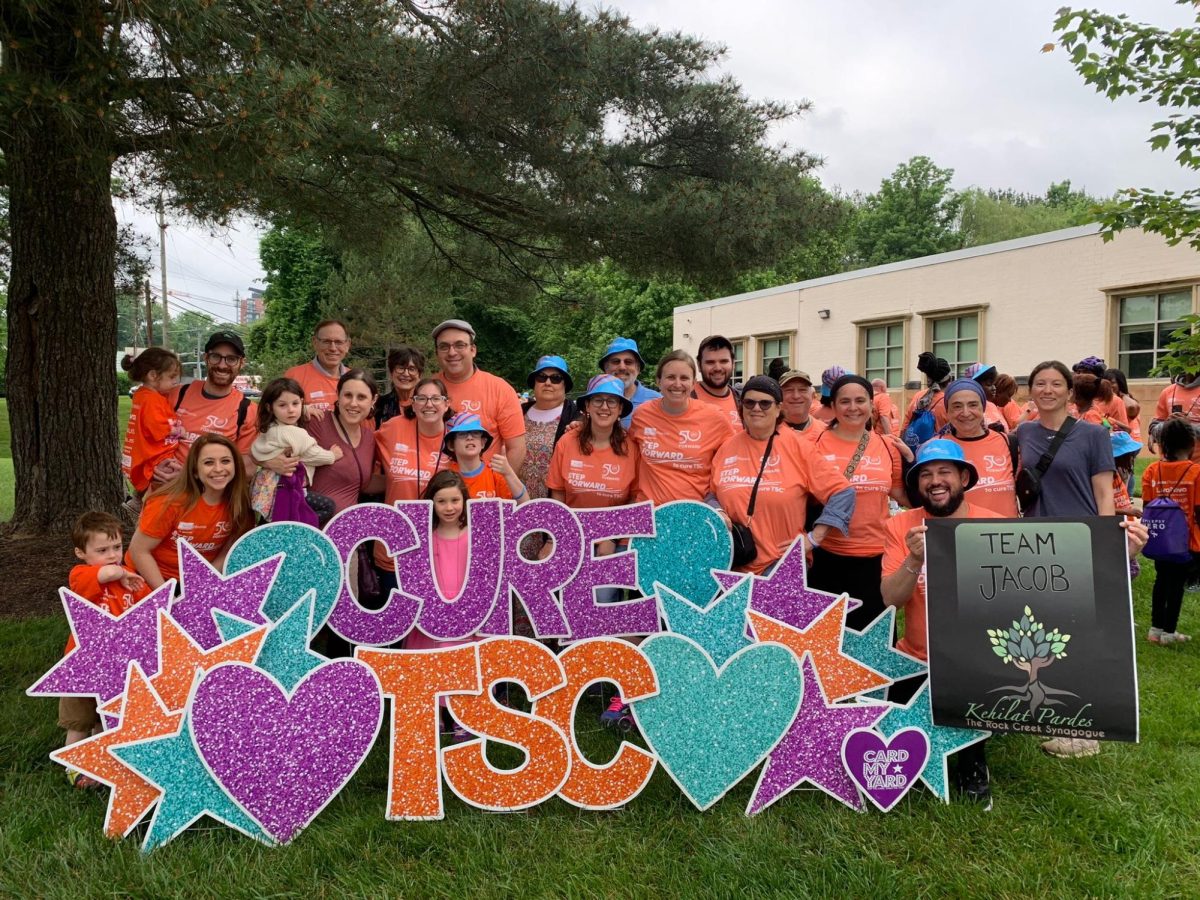Bohr Franklin: For CESJDS high school students interested in STEM, the Bohr-Franklin Science Journal is an avenue to pursue their passions. Named after two Jewish scientists, physicist Dr. Niels Bohr and chemist Dr. Rosalind Franklin, the student-led publication writes about news, discoveries and innovations in STEM.
All of the articles in the journal fall under one of the following sections: Biology, Chemistry, Physics, Technology, Engineering and Math and this year’s bonus section, Diseases and Disorders. The journal allows students to delve into a wide range of scientific subjects, and nurtures curiosity for all things relating to STEM. For adviser and high school chemistry teacher Daniela Munteanu, the core of the journal is the students.
“[The journal] allows students to combine their passion for science with their passion for writing, and improve their research and analytical skills,” Munteanu said.
Bohr-Franklin has published six issues since 2017, when it was launched by founders and former Editors-in-Chief Ezra Loeb (‘18) and Abigail Svoysky (‘18). Ever since, the journal has attempted to cultivate an appreciation for scientific inquiry, learning and growth. Current co-Editors-in-Chief, junior Noam Klein, appreciates the journal for not only its intellectual opportunities, but for its social opportunities as well.
“We’re all just very passionate about STEM. That’s what I love about it … I can just talk to people interested in STEM about STEM. If I could do that all day, I would,” Klein said.
Loa Ha’ari: Appealing to JDS’ Hebrew speaking community, Loa Ha’ari, or in English: The Lion’s Tongue, is the Hebrew literary magazine. Loa Ha’ari unites the student body by fulfilling the Jewish value of “Ahavat Israel,” a love for the Jewish homeland. Unlike other publications, Loa Ha’ari has become an in-class activity rather than a club, meaning that it meets exclusively during class time. The Class of 2026’s highest level Hebrew class currently acts as its staff.
Loa Ha’ari operates in groups under the guidance of its adviser, Hebrew teacher Yaffa Dagony. Each group is tasked with different responsibilities: editing the literary content, designing magazine spreads, collecting literary content through surveys or managing its media. For Israeli sophomore and editor Liem Elgrably, the Hebrew magazine holds a special place in her heart.
“It’s very unique to our school, it’s not that every school has this,” Elgrably said. “I think it’s really important to the Hebrew Department because just like there’s an English publication, they think there should be an Hebrew one too.”
Loa Ha’ari was initially designed as a creative magazine, including pieces like Hebrew poems and stories. Since beginning its publication in 2005, and as a result of the Israel-Hamas war, it has extended its focus to non-fictional works, including letters to the families of the hostages and the Israeli soldiers.
“It’s not an Israeli magazine, it’s a Jewish Day School magazine,” Dagony said. “And so we’re just proud. It is a showcase of what our students can write in Hebrew in all kinds of different subjects.”
Melting Pot: Representing the community’s Spanish and Arabic speaking students, Melting Pot has been JDS’s multilingual literary magazine for 42 years. Published prior to the annual Hispanic and Arabic Honor Society inductions, the publication culminates each year with a composition of Spanish and Arabic literary artistic works.
Ranging from poems in Spanish to short stories in Arabic, the Melting Pot highlights the teaching of the World Languages Department staff and its chair, Dr. Silvia Kurlat-Ares, who is also the magazine’s adviser. Kurlat-Ares acts as a linguistic expert for her staff, using her language skills to oversee their work.
“It showcases a different aspect of what you can do with language,” Kurlat-Ares said. “[For] students, taking a language is very academic. This is much more playful, much more of a different side of what you can do [with language].”
For the 2023-24 edition, with festivities as its theme, the Melting Pot is emphasizing the ways in which Hispanic and Arabic peoples celebrate their cultures, such as through holidays.
The American Scholastic Press Association (ASPA) has even awarded Melting Pot “Outstanding Theme,” as well as “First Place with Special Merit” among a national selection of high school literary magazines for 2023. According to Editor-in-Chief and junior Soleil Eschenlauer, Melting Pot attempts to encourage student linguistic growth.
“It allows for students to share their voices, and share them using the skills that [they] are required to learn in their language classes,” Eschenlauer said.
Reflections: Merging artistic and literary creativity skills, the Reflections Magazine serves as an outlet for students to express themselves. The magazine publishes each spring, every edition with its own theme. This school year the theme is “Magnified,” which will focus on individual voices that may not have been previously heard.
Reflections is steadfast in its mission of individual student expression, whether through personal statements, blackout poetry or nature collages, prioritizing creativity above all else. Amid her second year as Editor-in-Chief, junior Jessica Rosenberg feels her role has taught her lessons that she couldn’t learn elsewhere.
“It’s always fun seeing what people come up with because when you read someone’s poetry and their creative writing, you can get a sense for who that person is,” Rosenberg said. “It’s an artistic way of being able to share something really personal.”
For its 2022-23 edition, the ASPA awarded Reflections a first place in its annual contest. Following this achievement, in August, Reflections welcomed a new adviser, high school English teacher Devorah Berman. With a master of fine arts in creative writing, Berman treasures writing in all forms, and is grateful for the chance to work with students that want to share their writing with others.
“Having a place for people to share their creativity is really important, and I think our school does a really good job of finding so many outlets for students to be creative,” Berman said. “[Reflections] just allows people to have a place to put that written [and visual] creativity that they have.”
Collage: Middle school students have been publishing editions of Collage nearly every year since 2001. Similar to Reflections, Collage is a literary magazine compiled primarily of creative writing and artwork belonging to middle school students. This year, the staff intends to broaden its scope to other types of work, including book, movie and restaurant reviews as well as current events both in our school community and beyond. Middle school English teacher David Carrington has served as Collage’s adviser for the past three years.
“When you’re in middle school, you’re learning your craft in terms of writing and art, and your audience is usually your teacher and maybe one or two classmates,” Carrington said. “What Collage allows people to do is have a broader audience.”
Collage’s staff is divided into various positions: editor-in-chief, design manager, design staff, writing manager and writing staff. Editor-in-Chief and eight grade student Lena Lourenco, a second-year staff member, has gained valuable experiences from being a part of the magazine.
“I think it allows us to explore a lot of different and unique possibilities of what our interests are,” Lourenco said. “The way that the magazine is created … it feels like you’re really working on an actual magazine.”






